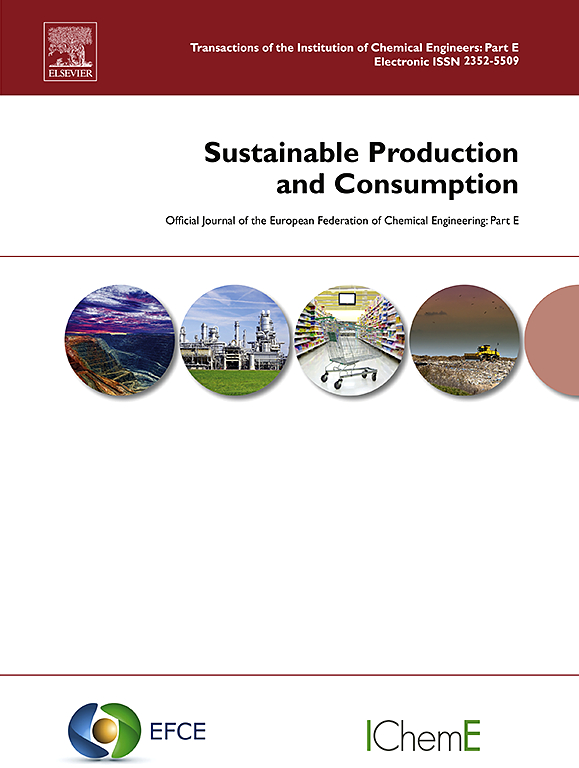Communicating the environmental impacts of individual actions in the context of Planetary Boundaries
IF 10.9
1区 环境科学与生态学
Q1 ENVIRONMENTAL STUDIES
引用次数: 0
Abstract
Human activities, driven by high consumption and rapid development, are pushing environmental degradation beyond the planet's carrying capacities. Changing consumption patterns is a key lever to reduce these environmental pressures to sustainable levels, and this can be quantified using life-cycle assessment (LCA). However, there are misconceptions about the effectiveness of specific actions, and LCA results are typically not contextualized by comparison to environmental carrying capacities, making it difficult to distinguish between “better for the environment” and “good enough for the environment”. This study seeks to address this gap by communicating environmental impacts of lifestyle choices on an absolute scale, using relatable frameworks like that of the Planetary Boundaries. It estimates the footprint of an average person's lifestyle, as well as the impacts of 23 common daily activities, and compares these impacts to an individual's carrying capacity budget for 6 impact categories. Applied to Denmark, the results reveal a significant overshoot of personal environmental budgets across all categories, except for water use, with some activities alone surpassing the full personal budget for impact categories like climate change and resource use. For those major contributing activities, alternative ways of fulfilling them can help realign lifestyles with environmental budgets. Other activities – despite usually perceived as highly impactful – are actually found insignificant. Overall, bringing environmental impacts to sustainable levels through individual actions alone are insufficient to bring environmental impacts to sustainable levels, particularly with the current available technologies. This calls for the need for systemic changes that prioritize sustainable technologies and the adoption of sufficiency-focused lifestyles.
在“地球边界”的背景下,传达个人行为对环境的影响
在高消费和快速发展的驱动下,人类活动正在使环境退化超出地球的承载能力。改变消费模式是将这些环境压力降低到可持续水平的关键杠杆,这可以使用生命周期评估(LCA)进行量化。然而,对具体行动的有效性存在误解,并且LCA结果通常没有通过与环境承载能力进行比较来确定背景,因此很难区分“对环境更好”和“对环境足够好”。这项研究试图通过在绝对规模上传达生活方式选择对环境的影响来解决这一差距,使用像地球边界这样的相关框架。它估算了普通人生活方式的足迹,以及23种常见日常活动的影响,并将这些影响与个人在6种影响类别中的承载能力预算进行了比较。应用于丹麦,结果显示,除了用水之外,所有类别的个人环境预算都明显超过了个人预算,仅一些活动就超过了气候变化和资源利用等影响类别的全部个人预算。对于这些主要的贡献活动,实现它们的替代方法可以帮助重新调整生活方式与环境预算。其他活动——尽管通常被认为是非常有影响力的——实际上被认为是微不足道的。总的来说,仅通过个人行动使环境影响达到可持续的水平不足以使环境影响达到可持续的水平,特别是利用现有的技术。这就需要进行系统性的变革,优先考虑可持续技术和采用以充足为重点的生活方式。
本文章由计算机程序翻译,如有差异,请以英文原文为准。
求助全文
约1分钟内获得全文
求助全文
来源期刊

Sustainable Production and Consumption
Environmental Science-Environmental Engineering
CiteScore
17.40
自引率
7.40%
发文量
389
审稿时长
13 days
期刊介绍:
Sustainable production and consumption refers to the production and utilization of goods and services in a way that benefits society, is economically viable, and has minimal environmental impact throughout its entire lifespan. Our journal is dedicated to publishing top-notch interdisciplinary research and practical studies in this emerging field. We take a distinctive approach by examining the interplay between technology, consumption patterns, and policy to identify sustainable solutions for both production and consumption systems.
 求助内容:
求助内容: 应助结果提醒方式:
应助结果提醒方式:


